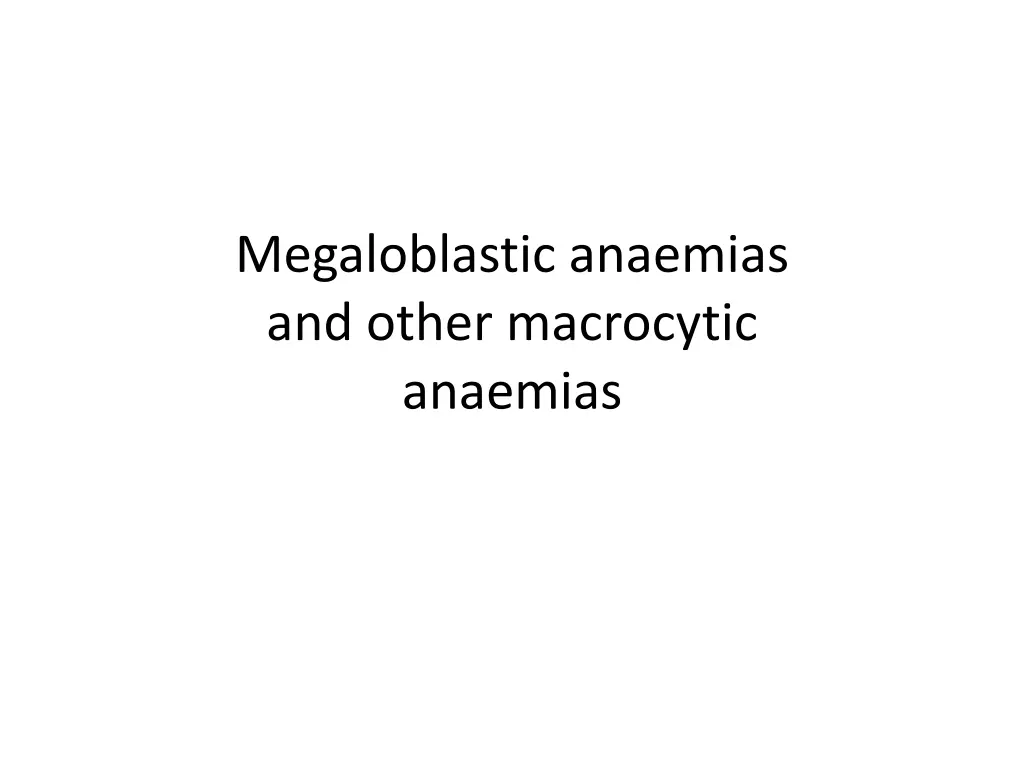
Understanding Megaloblastic Anemias and Macrocytic Anemias
Dive into the world of macrocytic anemia, where red cells are enlarged. Explore the causes, classifications into megaloblastic and non-megaloblastic types, and the distinct characteristics of megaloblastic anemias with a focus on abnormal erythroblast maturation in the bone marrow.
Download Presentation

Please find below an Image/Link to download the presentation.
The content on the website is provided AS IS for your information and personal use only. It may not be sold, licensed, or shared on other websites without obtaining consent from the author. If you encounter any issues during the download, it is possible that the publisher has removed the file from their server.
You are allowed to download the files provided on this website for personal or commercial use, subject to the condition that they are used lawfully. All files are the property of their respective owners.
The content on the website is provided AS IS for your information and personal use only. It may not be sold, licensed, or shared on other websites without obtaining consent from the author.
E N D
Presentation Transcript
Megaloblastic anaemias and other macrocytic anaemias
Introduction to macrocytic anaemia In macrocytic anaemia the red cells are abnormally large (mean corpuscular volume, MCV >98 fL). There are several causes but they can be broadly subdivided into megaloblastic and non megaloblastic based on the appearance of developing erythroblasts in the bone marrow.
Megaloblastic anaemias This is a group of anaemias in which the erythroblasts in the bone marrow show a characteristic abnormality maturation of the nucleus being delayed relative to that of the cytoplasm. The underlying defect accounting for the asynchronous maturation of the nucleus is defective DNA synthesis and this is usually caused by deficiency of vitamin B12 or folate. Less commonly, abnormalities of metabolism of these vitamins or other lesions in DNA synthesis may cause an identical haematological appearance






















